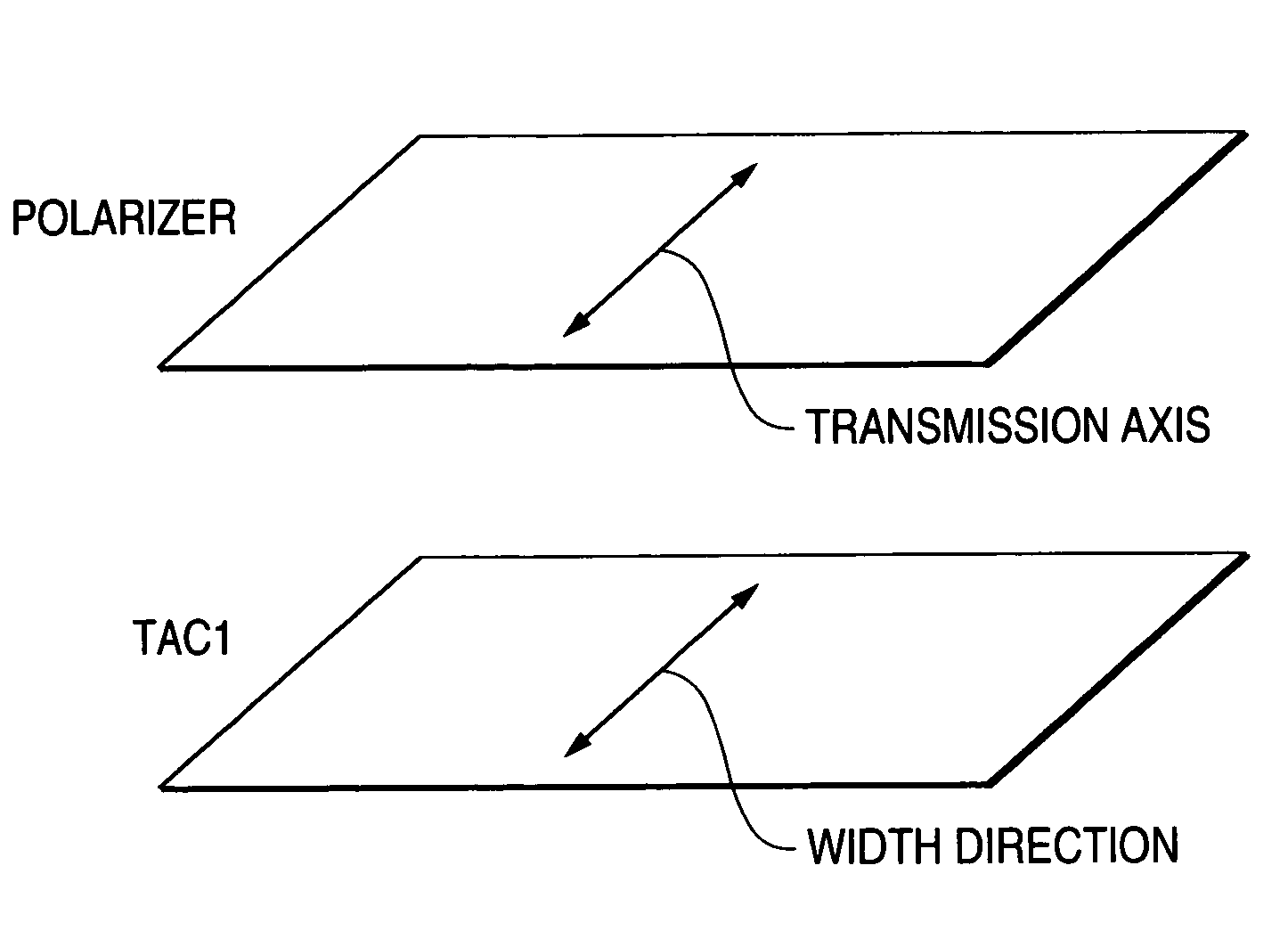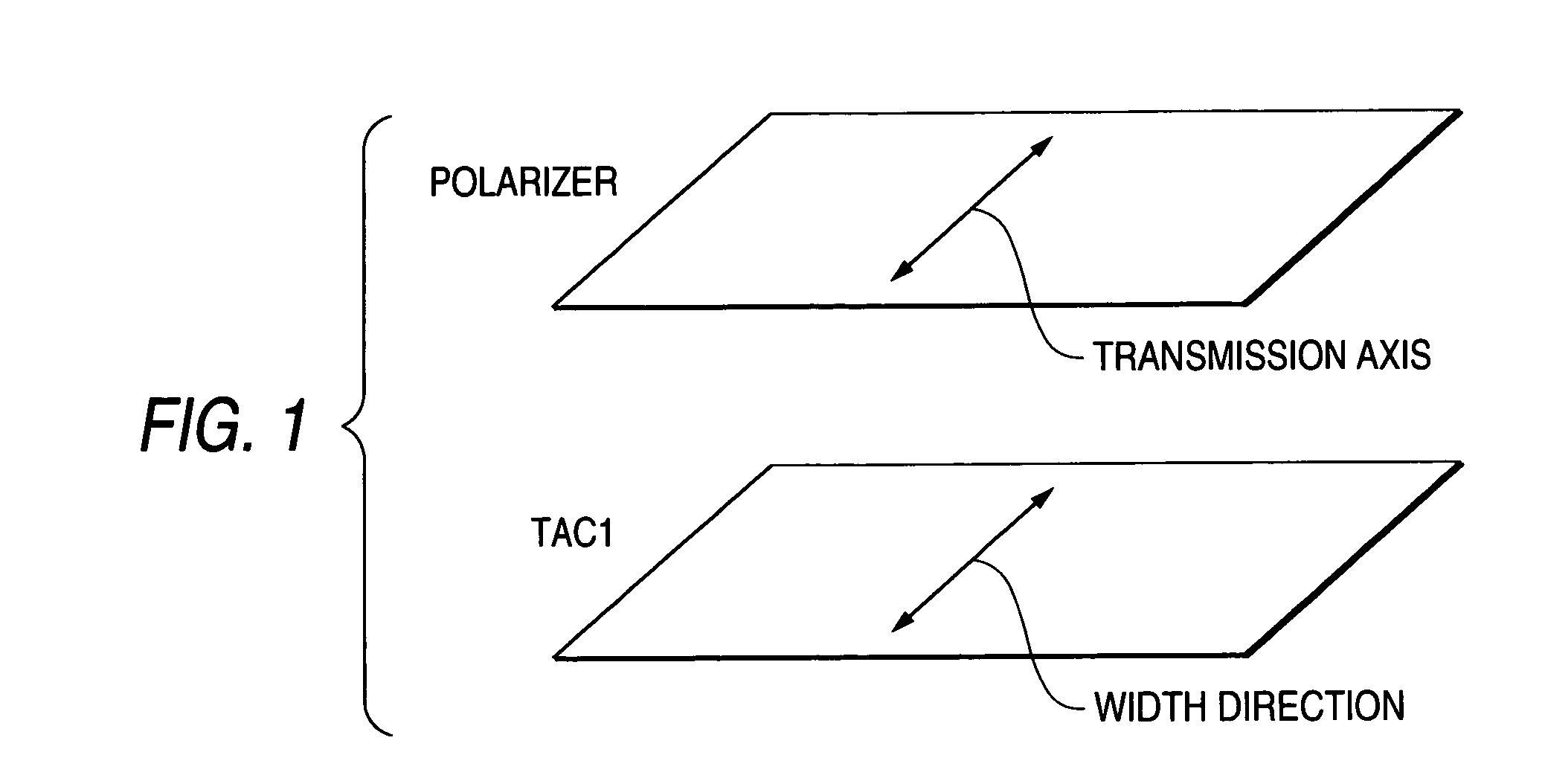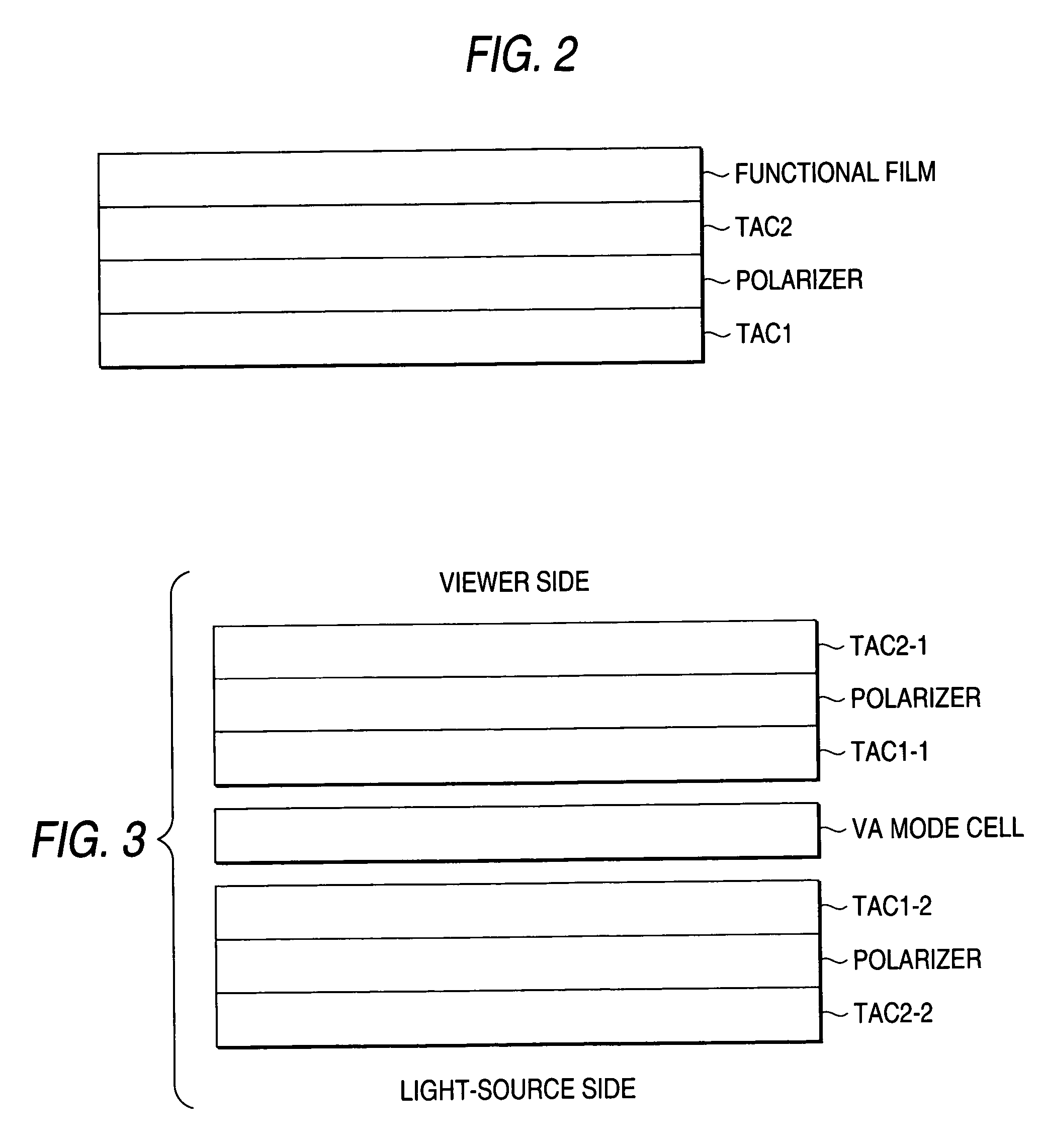Cellulose acylate film, optical compensation film, polarizing plate and liquid crystal display
a technology of cellulose acylate film and polarizing plate, which is applied in the direction of optical elements, instruments, transportation and packaging, etc., can solve the problems of glass cell warpage, contact parts that cannot meet the demands of the above-mentioned art, and light leakage in the contact part, so as to reduce the viewing angle characteristic change, optical characteristic and hue change, and the effect of high elasticity modulus
- Summary
- Abstract
- Description
- Claims
- Application Information
AI Technical Summary
Benefits of technology
Problems solved by technology
Method used
Image
Examples
example 1
>
(1) Cellulose Acylate
[0388]Cellulose acylates having different degrees of acyl substitution as presented in Table 1 were prepared. More specifically, acylation reaction was carried out at 40° C. by addition of sulfuric acid as a catalyst (in an amount of 7.8 parts by mass per 100 parts by mass of cellulose) besides carboxylic acids. Thereafter, the total degree of substitution and the degree of 6-position substitution were adjusted by controlling the content of sulfuric acid catalyst, the water content and the ripening time. The ripening was performed at 40° C. Further, low molecular components of the cellulose acylates thus prepared were removed by washing with acetone.
(2) Dope Preparation
Cellulose Acylate Solution
[0389]The following ingredients were charged into a mixing tank, made into a solution by stirring, and further heated at 90° C. for about 10 minutes. The resulting solution was filtered through a filter paper with an average pore size of 34 μm and a sintered metal filte...
example 2
(Polarizing Plate Making 1)
[0407]Iodine was adsorbed to a stretched polyvinyl alcohol film to make a polarizer.
[0408]Each of the cellulose acylate films (F1 to F14, corresponding to TAC1 in FIGS. 1 to 3) formed in Example 1 was stacked on one side of the polarizer with the aid of an adhesive of polyvinyl alcohol type. Saponification treatment for these films was performed under the following condition.
[0409]A 1.5N water solution of sodium hydroxide was prepared, and kept at 55° C. A 0.01N aqueous dilute sulfuric acid was prepared, and kept at 35° C. The cellulose acylate films formed were immersed for 2 minutes in the water solution of sodium hydroxide, and then immersed in water to thoroughly wash the sodium hydroxide away from the films. Then, the films were immersed for 1 minute in the dilute aqueous sulfuric acid, and then immersed in water to thoroughly wash the sulfuric acid away from the films. Finally, these film samples were fully dried at 120° C.
[0410]A commercially availa...
example 3
(Mounting in Panel)
EXAMPLE 3-1
(Mounting in VA Panel) (Single Type)
[0442]A liquid crystal display unit as shown in FIG. 3 was produced. More specifically, an upper-side polarizing plate (including TAC2-1 (with or without a functional film), a polarizer and TAC1-1), a VA-mode liquid crystal cell and a lower-side polarizing plate (including TAC1-2, a polarizer and TAC2-2), from the viewing direction (from above), were stacked in the display unit, and further a backlight source was arranged.
[0443]A liquid crystal cell was made as follows: Two substrates were stacked so that the gap between them was kept at 3.6 μm, and a liquid crystal material having negative permittivity anisotropy (MLC6608, produced by Merck & Co.) was infused in between the substrates and sealed therein to form a liquid crystal layer. The retardation of the liquid crystal layer (the product of a thickness (d μm) and a refractive-index anisotropy (Δn) of the liquid crystal layer, or d Δn) was adjusted to 300 nm. Addit...
PUM
| Property | Measurement | Unit |
|---|---|---|
| thickness | aaaaa | aaaaa |
| thickness | aaaaa | aaaaa |
| thickness | aaaaa | aaaaa |
Abstract
Description
Claims
Application Information
 Login to View More
Login to View More - R&D
- Intellectual Property
- Life Sciences
- Materials
- Tech Scout
- Unparalleled Data Quality
- Higher Quality Content
- 60% Fewer Hallucinations
Browse by: Latest US Patents, China's latest patents, Technical Efficacy Thesaurus, Application Domain, Technology Topic, Popular Technical Reports.
© 2025 PatSnap. All rights reserved.Legal|Privacy policy|Modern Slavery Act Transparency Statement|Sitemap|About US| Contact US: help@patsnap.com



